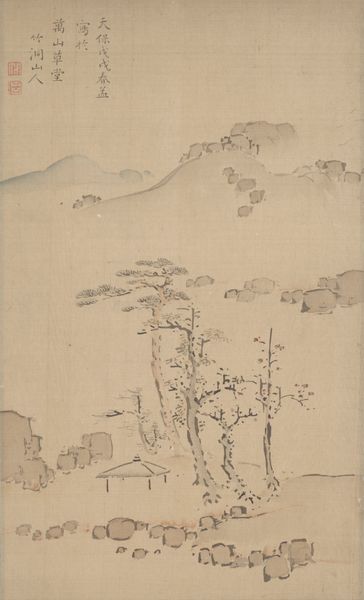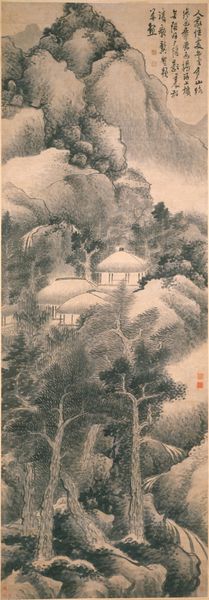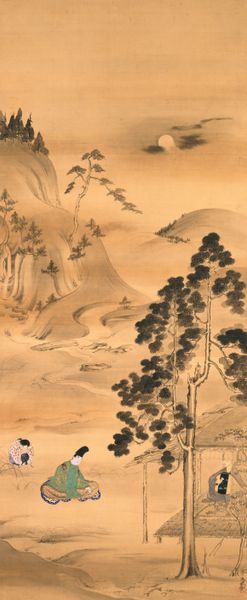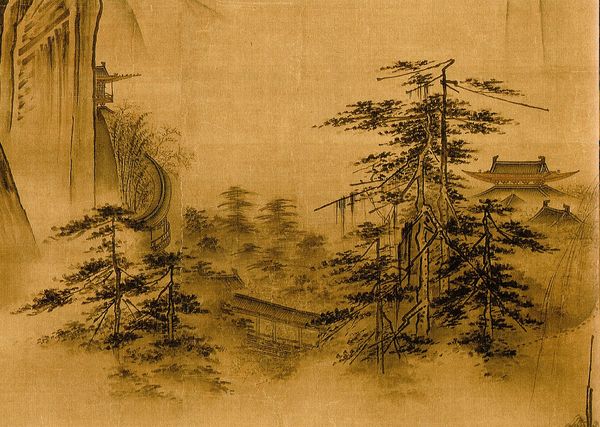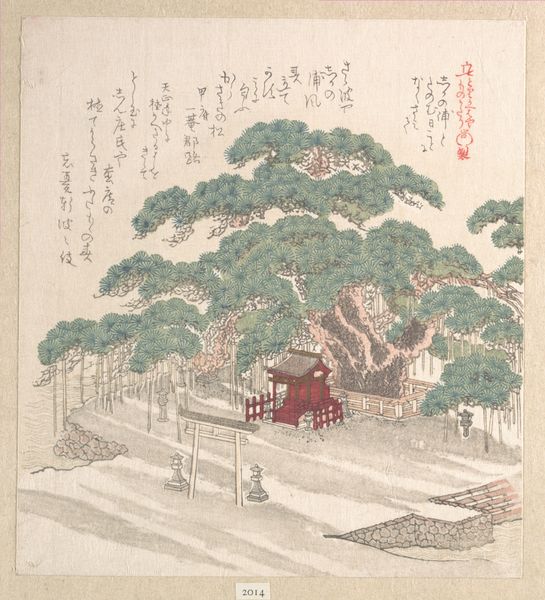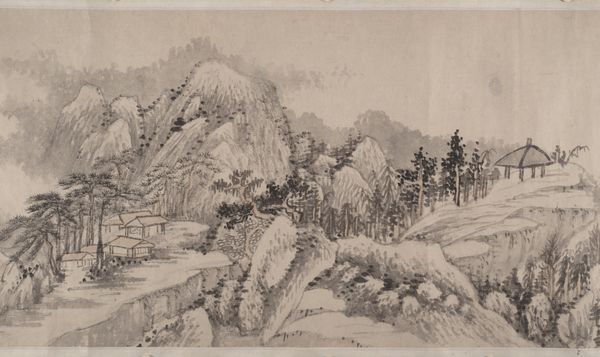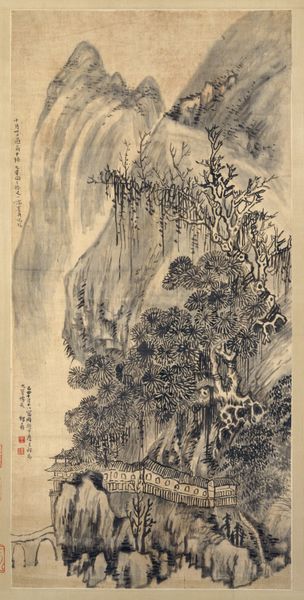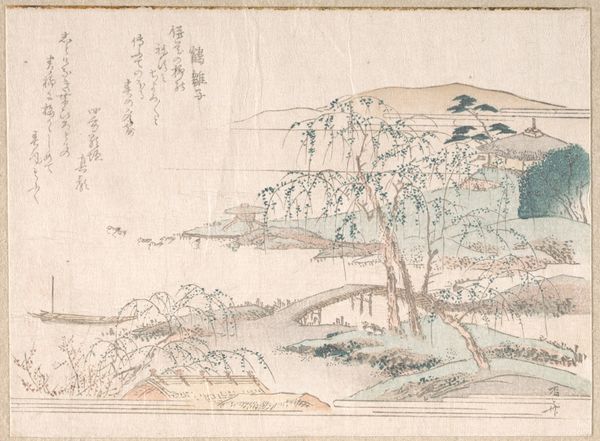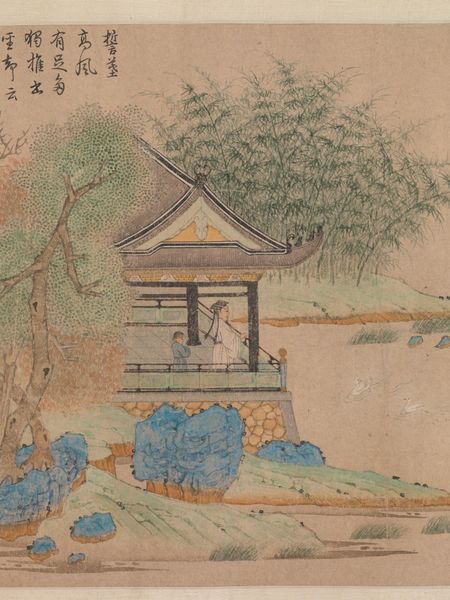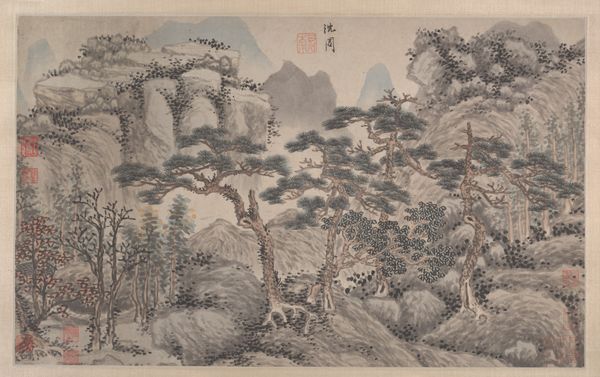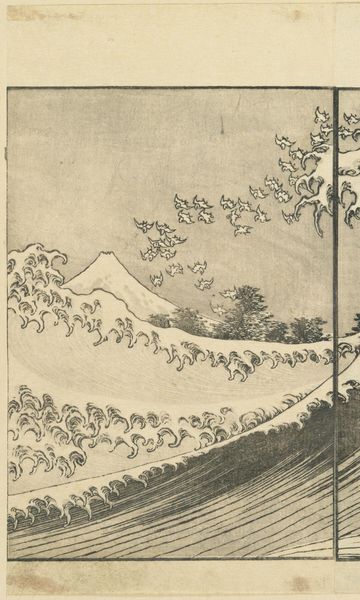
drawing, paper, hanging-scroll, ink, color-on-paper
#
drawing
#
asian-art
#
landscape
#
paper
#
hanging-scroll
#
ink
#
color-on-paper
#
geometric
#
miniature
#
yamato-e
Dimensions: 40 1/4 × 17 3/8 in. (102.24 × 44.13 cm) (image)
Copyright: Public Domain
Editor: This hanging scroll, "Landscape with Temple" by Kano Sansetsu, made around the 17th century, really intrigues me. It's delicate, almost like a miniature world captured in ink and color on paper. The temple sits nestled between these stark geometric hills and it evokes such a serene, almost secretive atmosphere. How do you interpret this work within its historical context? Curator: The choice of the temple as subject is especially meaningful. Temples were, of course, not simply religious structures; they served as important hubs of cultural and political power. Kano Sansetsu, working within the context of the Kano school, would have been deeply aware of this social function of religious architecture. Note how the temple is not depicted in isolation, but carefully positioned *within* this carefully constructed landscape. Editor: So, the positioning of the temple speaks volumes. I’m guessing its placement wasn't just aesthetic? Curator: Exactly. It suggests an understanding of how the ruling class—those who supported these temples, those who *used* these temples—perceived their relationship with the land and with spiritual authority. And how that message was constructed, circulated, and reinforced. Also consider that screen and scroll paintings, were often displayed in formal settings. Think of who saw it, and *how* they would interpret the temple’s dominance over the land. Editor: That's a fascinating perspective. I was just appreciating its aesthetic, but the undercurrents of power and social dynamics… I hadn't considered them in depth. Curator: Art is never truly apolitical, even landscape art like this. It’s fascinating to peel back the layers and examine the power structures that shaped the artist's vision, and ultimately, its reception by different social classes. Editor: This has completely changed how I see the painting. Thanks, it is nice to think more critically. Curator: My pleasure! Keep questioning, and keep digging. The richer interpretations always lie beneath the surface.
Comments
minneapolisinstituteofart about 2 years ago
⋮
Between two mountains we can see the entrance to a countryside villa tucked into a grove of pine trees. The dark, distant peak and subtle glow around the architectural structures suggest a nighttime scene. At the beginning of the 1600s, the main branch of the Kano house relocated to the new capital, Edo (present-day Tokyo), and received the patronage of the new military rulers, the Tokugawa. One branch of the Kano remained in Kyoto and received commissions from aristocratic families and temples in the old capital. This branch, known as the Kyōgano-ke, or “Kyoto Kano house,” was led first by Sanraku and his adopted son, Sansetsu, who painted this hanging scroll.
Join the conversation
Join millions of artists and users on Artera today and experience the ultimate creative platform.
